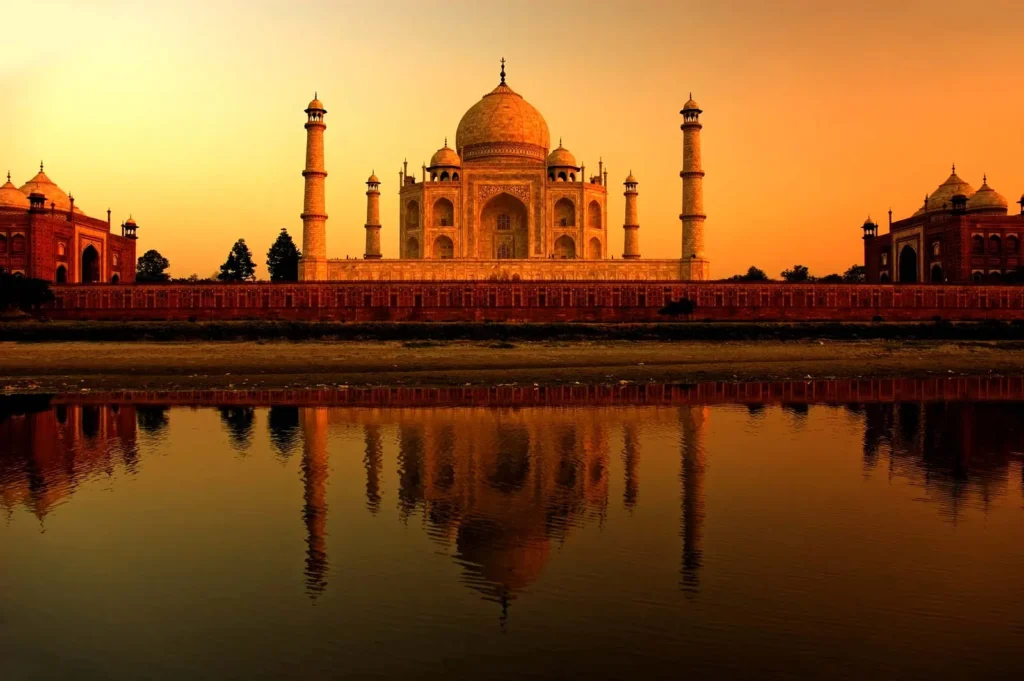The Five Largest Rivers of Uttar Pradesh: An Overview
Introduction to the Major Rivers
Uttar Pradesh, a state in northern India, is home to several significant rivers that play a crucial role in its geography, agriculture, and economy. These rivers not only contribute to the state’s agricultural prosperity but also hold historical and cultural significance. In this article, we delve into the five largest rivers of Uttar Pradesh, examining their importance and impact on the state.
1. The Ganges: The Lifeline of Uttar Pradesh
The Ganges River, known as the Ganga, is the most important river in Uttar Pradesh. Originating from the Himalayas, it flows through the state and is pivotal for both religious and economic reasons. The river supports agriculture by providing water for irrigation, and its basin is one of the most fertile regions in the country. Additionally, the Ganges holds immense spiritual significance, with numerous cities along its banks, such as Varanasi, being major pilgrimage sites.
2. The Yamuna: A Significant Tributary
Flowing parallel to the Ganges, the Yamuna River is another major river in Uttar Pradesh. It originates from the Yamunotri Glacier in the Himalayas and merges with the Ganges at Prayagraj. The Yamuna is vital for water supply and irrigation in the region, and cities like Agra and Delhi are situated along its course. Historically, the river has been central to the development of various civilizations and remains crucial for the state’s agriculture and water needs.
3. The Ghagra: A Vital River System
The Ghagra River, also known as the Ghaggar-Hakra, flows through the northern and eastern parts of Uttar Pradesh. It is a major tributary of the Ganges and contributes significantly to the water resources in the region. The Ghagra supports agricultural activities and has historically been important for trade and settlement. Its seasonal floods also play a role in enriching the soil in the region.
4. The Gomti: A Sacred River
The Gomti River originates from the Gomti Lake in the Himalayas and flows through the city of Lucknow before merging with the Ganges. This river is essential for the city’s water supply and is also revered in Hindu mythology. The Gomti River contributes to the state’s agricultural productivity and is integral to the urban water management of Lucknow and surrounding areas.
5. The Ken: An Important Tributary
The Ken River, a tributary of the Yamuna, flows through the central part of Uttar Pradesh. It is crucial for the irrigation of the Bundelkhand region, known for its arid conditions. The Ken River supports local agriculture and is vital for the socio-economic development of the region. Its waters are used for various purposes, including drinking water and irrigation.

Why This News is Important
Understanding Regional Resources
The rivers of Uttar Pradesh are not just geographical features but vital resources that sustain the state’s agriculture, economy, and culture. By studying these rivers, students can gain insights into the regional resource distribution and its impact on the state’s development.
Agricultural Impact
The rivers play a crucial role in irrigation and agriculture. The fertile plains along these rivers are instrumental in sustaining the agricultural productivity of Uttar Pradesh, which is essential for the state’s economy and food security.
Cultural and Historical Significance
Many of these rivers hold significant cultural and historical importance. Understanding their role helps students appreciate the historical evolution of settlements and the cultural practices associated with these rivers.
Economic Contributions
The rivers contribute to various economic activities, including agriculture, trade, and water management. Knowledge of their economic impact is crucial for understanding regional development and planning.
Environmental Awareness
Studying these rivers also highlights the need for environmental conservation. Awareness of river systems helps in promoting sustainable practices and addressing challenges related to water management and pollution.
Historical Context
Ancient Significance
The major rivers of Uttar Pradesh have been significant since ancient times. The Ganges and Yamuna, in particular, have been central to Indian civilization, influencing trade, settlement patterns, and religious practices. Historical texts and archaeological findings highlight the importance of these rivers in shaping the region’s history.
Medieval and Colonial Eras
During the medieval period, the rivers continued to play a crucial role in the development of regional kingdoms and empires. The colonial era saw the British implementing various irrigation projects to enhance agricultural productivity, impacting the management and utilization of these rivers.
Post-Independence Developments
After India gained independence, the government focused on improving water management and irrigation systems along these rivers. Various projects and policies have been implemented to address challenges related to river conservation, flood management, and agricultural development.
Key Takeaways from The Five Largest Rivers of Uttar Pradesh
| Serial Number | Key Takeaway |
|---|---|
| 1 | The Ganges River is crucial for agriculture and holds religious significance. |
| 2 | The Yamuna River supports major cities and is important for regional water supply. |
| 3 | The Ghagra River contributes to agricultural activities and historical trade routes. |
| 4 | The Gomti River is important for urban water management and has cultural relevance. |
| 5 | The Ken River plays a significant role in the irrigation of the Bundelkhand region. |
Important FAQs for Students from this News
1. What are the five largest rivers of Uttar Pradesh?
- The five largest rivers of Uttar Pradesh are the Ganges, Yamuna, Ghagra, Gomti, and Ken.
2. Why is the Ganges River important to Uttar Pradesh?
- The Ganges River is crucial for agriculture, providing irrigation to the fertile plains, and holds significant religious and cultural importance, with cities like Varanasi situated along its banks.
3. How does the Yamuna River impact Uttar Pradesh?
- The Yamuna River supports major cities like Agra and Delhi, contributes to regional water supply and irrigation, and is significant in historical and cultural contexts.
4. What is the role of the Ghagra River in Uttar Pradesh?
- The Ghagra River is important for agricultural activities, supports regional trade and settlement, and contributes to the water resources of northern and eastern Uttar Pradesh.
5. Why is the Gomti River significant for Lucknow?
- The Gomti River is essential for Lucknow’s water supply, contributes to agricultural productivity, and holds cultural significance in Hindu mythology.
Some Important Current Affairs Links
















